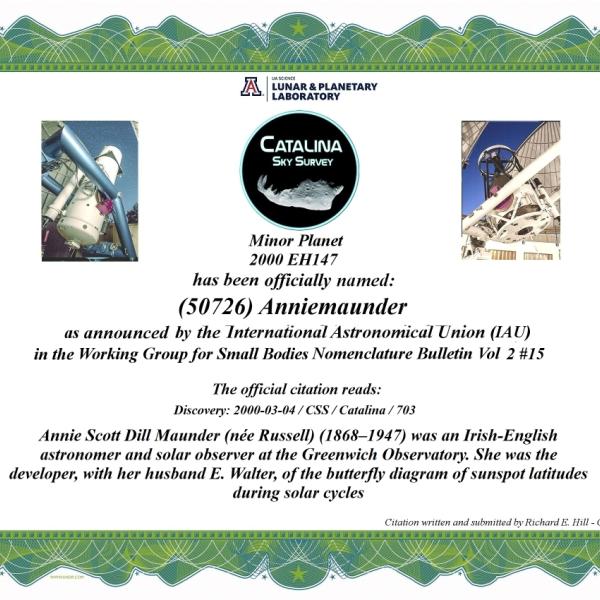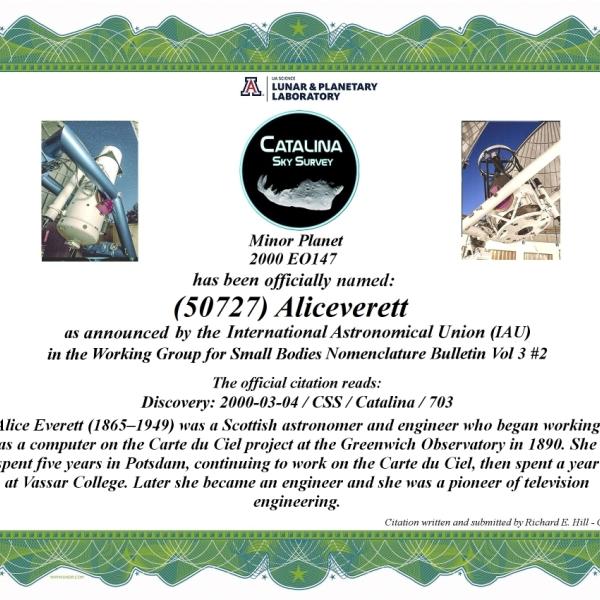The names of two Girtonians are officially written in the stars. The International Astronomical Union has announced, in partnership with the Catalina Sky Survey and the British Astronomical Association, that two asteroids have been named for Annie Maunder and Alice Everett. Annie and Alice both came to Girton College in 1886 and both read Mathematics.
News
A Stellar Tribute
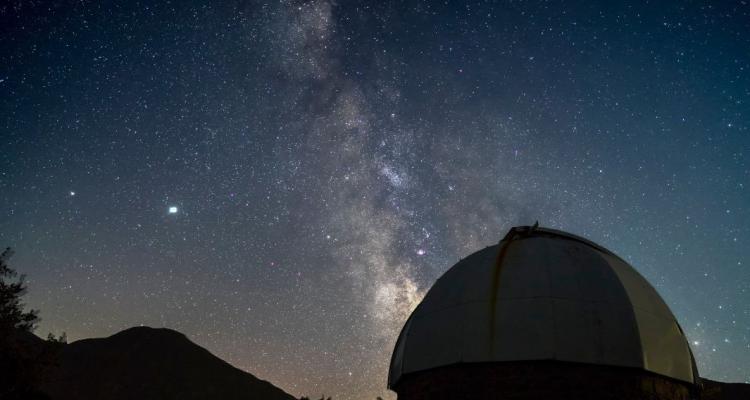
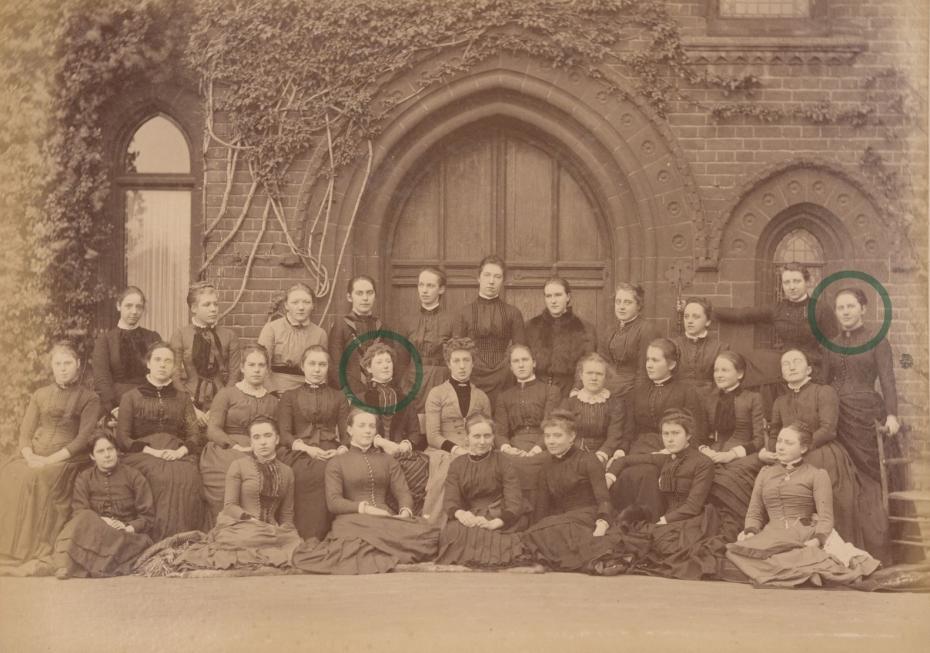
1886 First Year (matriculation) photograph, Alice Everett circled centre, Annie Maunder circled right (Archive reference GCPH11-4a-36-24).
Annie Maunder (née Russell; 1868 – 1947)
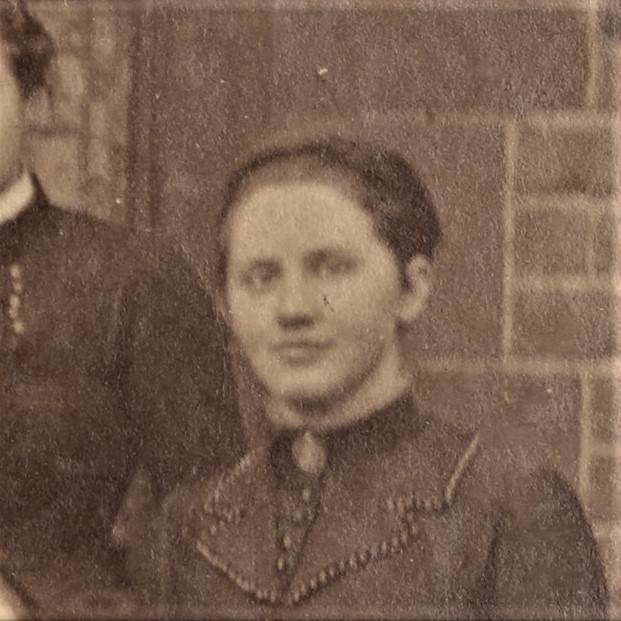 Annie was born in Strabane, Northern Ireland. Her early schooling took place at home and in Belfast before she won a scholarship to study Mathematics at Girton. Following a brief stint teaching, and at the encouragement of her contemporary and friend, Alice Everett, Annie joined the Royal Observatory, Greenwich as a ‘lady computer’. At the Observatory she was attached to the Solar Department where she used her mathematical skills to analyse raw observations and turn these into useable data. She also made observations herself using a special type of telescope made for photographing the Sun.
Annie was born in Strabane, Northern Ireland. Her early schooling took place at home and in Belfast before she won a scholarship to study Mathematics at Girton. Following a brief stint teaching, and at the encouragement of her contemporary and friend, Alice Everett, Annie joined the Royal Observatory, Greenwich as a ‘lady computer’. At the Observatory she was attached to the Solar Department where she used her mathematical skills to analyse raw observations and turn these into useable data. She also made observations herself using a special type of telescope made for photographing the Sun.
In 1895 Annie married (Edward) Walter Maunder, the then Head of the Solar Department, and therefore was required to resign her post. She continued her work in astronomy as a volunteer assistant to Walter and as a member of the British Astronomical Association (BAA). The Maunders undertook several international solar eclipse expeditions with the BAA. One notable trip to India in 1898 (for which she had received some funding from Girton as a Pfeiffer Research Student) resulted in Annie securing plates of the longest coronal extensions yet photographed. Together they compiled many years’ worth of sunspot observations to create the renowned ‘butterfly diagram’, a diagram still used in solar studies today.
Annie and Walter published extensively but often under Walter’s name. In one joint publication – The Heavens and their Story – Walter noted in the preface that the book was ‘almost wholly the work of my wife’. In 1916, the Royal Astronomical Society (RAS) admitted Annie as one of the first female Fellows, over twenty years after she and Alice were denied membership. Recognition of Annie’s work could have slipped from history but in recent years a light has been shone on her achievements. A crater on the Moon has been named for the Maunders, the Annie Maunder medal for an outstanding contribution to outreach and public engagement in astronomy or geophysics was established by the RAS, and in 2018 the Royal Observatory’s first new telescope in over 60 years was called the Annie Maunder Astrographic Telescope in her honour.
Alice Everett (1865 – 1949)
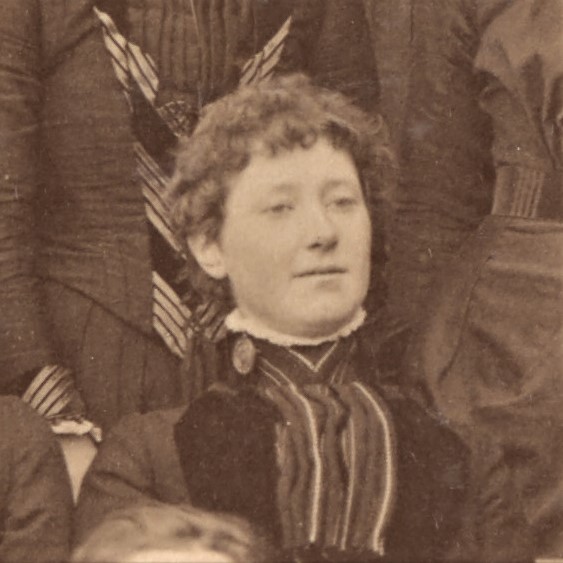 Alice also grew up in Northern Ireland though she was born in Glasgow. Initially she undertook studies at Queen’s College, Belfast before joining Girton to read Mathematics (receiving a scholarship too). After completing her studies Alice joined the Royal Observatory, Greenwich as a ‘lady computer’, a year ahead of Annie, and she was one of the first four women recruited by the Observatory. Alice was assigned to the Astrographic Department and undertook work on the international Carte du Ciel project, which aimed to catalogue and map the positions of millions of stars. Like Annie, Alice was refused admittance to the RAS in 1892. She joined the more welcoming BAA and was an active member, publishing her work in the Association’s journal and acting as secretary for a time.
Alice also grew up in Northern Ireland though she was born in Glasgow. Initially she undertook studies at Queen’s College, Belfast before joining Girton to read Mathematics (receiving a scholarship too). After completing her studies Alice joined the Royal Observatory, Greenwich as a ‘lady computer’, a year ahead of Annie, and she was one of the first four women recruited by the Observatory. Alice was assigned to the Astrographic Department and undertook work on the international Carte du Ciel project, which aimed to catalogue and map the positions of millions of stars. Like Annie, Alice was refused admittance to the RAS in 1892. She joined the more welcoming BAA and was an active member, publishing her work in the Association’s journal and acting as secretary for a time.
After five years Alice took up a temporary post at the Astrophysical Observatory of Potsdam, making her the first woman to work in an observatory in Germany. Here Alice continued her work on the Carte du Ciel project, mapping the position of 22,000 stars in one year alone.
Alice retuned to London in 1900 and her career pivoted to the field of optics, inspired by the work of her father Professor Joseph Everett. Despite her successes – in 1903 her father presented a paper by her to the Physical Society of London, the first paper by a woman to appear in the society's journal – Alice struggled to find regular paid work. The outbreak of World War One changed this and in 1917 she was able to secure a position at the National Physical Laboratory, a post she held until her retirement in 1925.
Retirement did not spell the end of Alice’s working life and she gained expertise in a third field, electrical and wireless engineering. More specifically Alice became interested in television, then a very new technology. In 1927 Alice became a founding member of the Television Society (now Royal Television Society) and was involved with the Baird Television Company. Here she successfully applied for joint patents with John Baird, the electrical engineer and inventor who demonstrated the world's first live working television system.
In recognition of Alice’s career, she received a civil list pension of £100 in 1938.
Asteroids Anniemaunder and Aliceeverett serve as a cosmic reminder of the extraordinary contributions these Girtonians have made, and for ever links their names to the infinite universe they so ardently studied.

